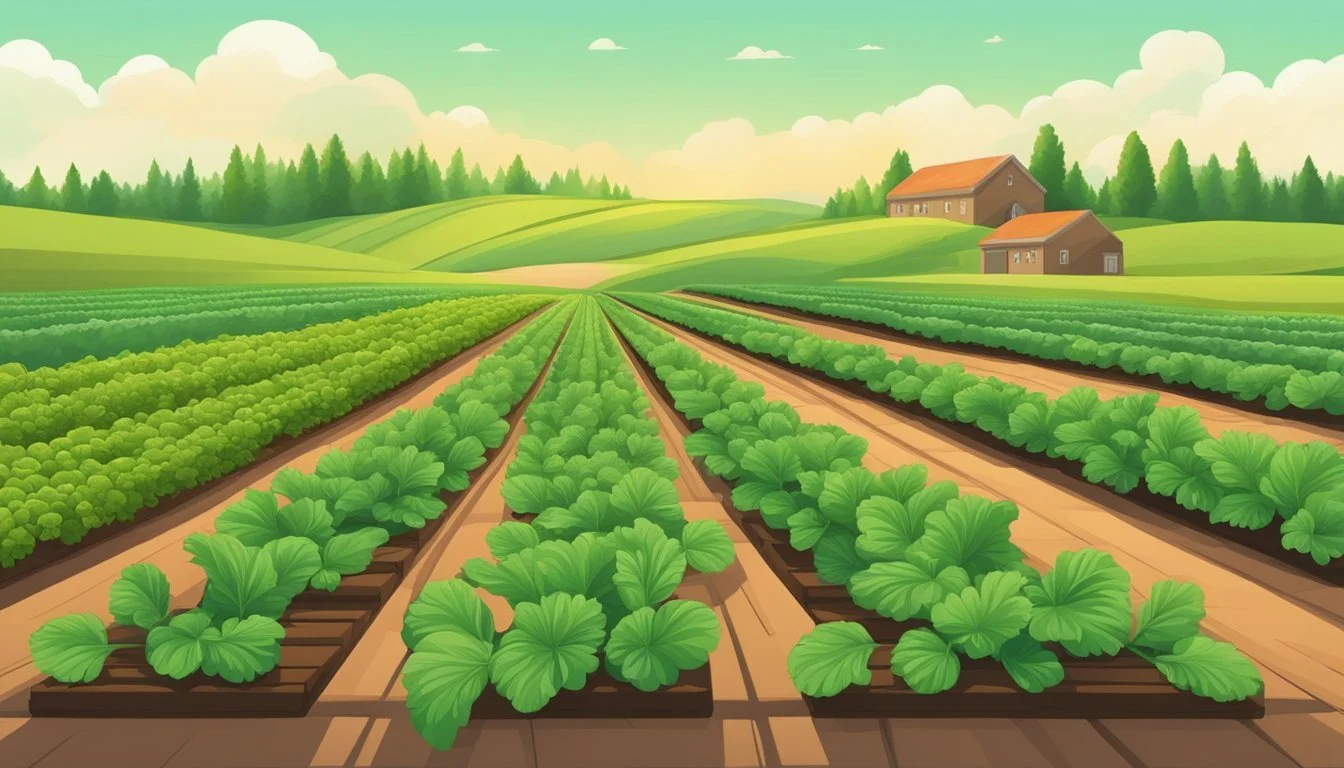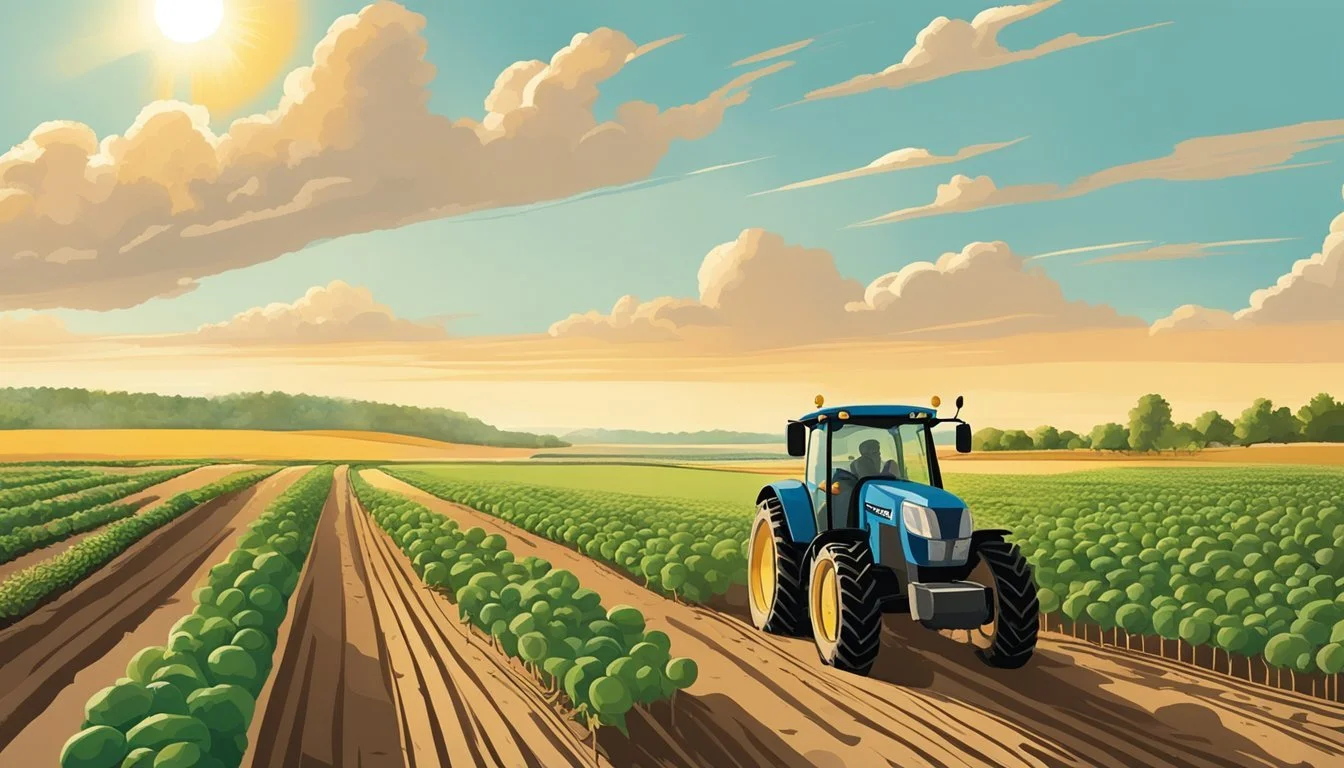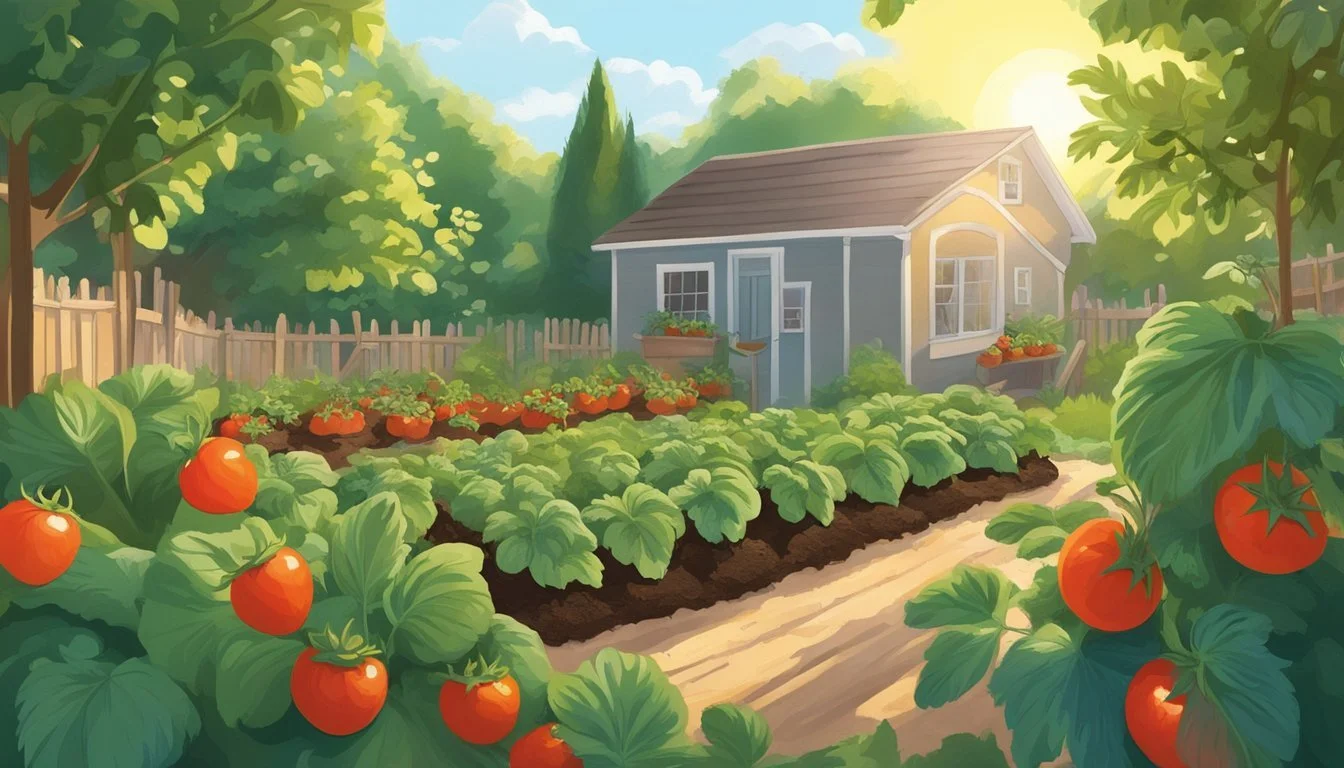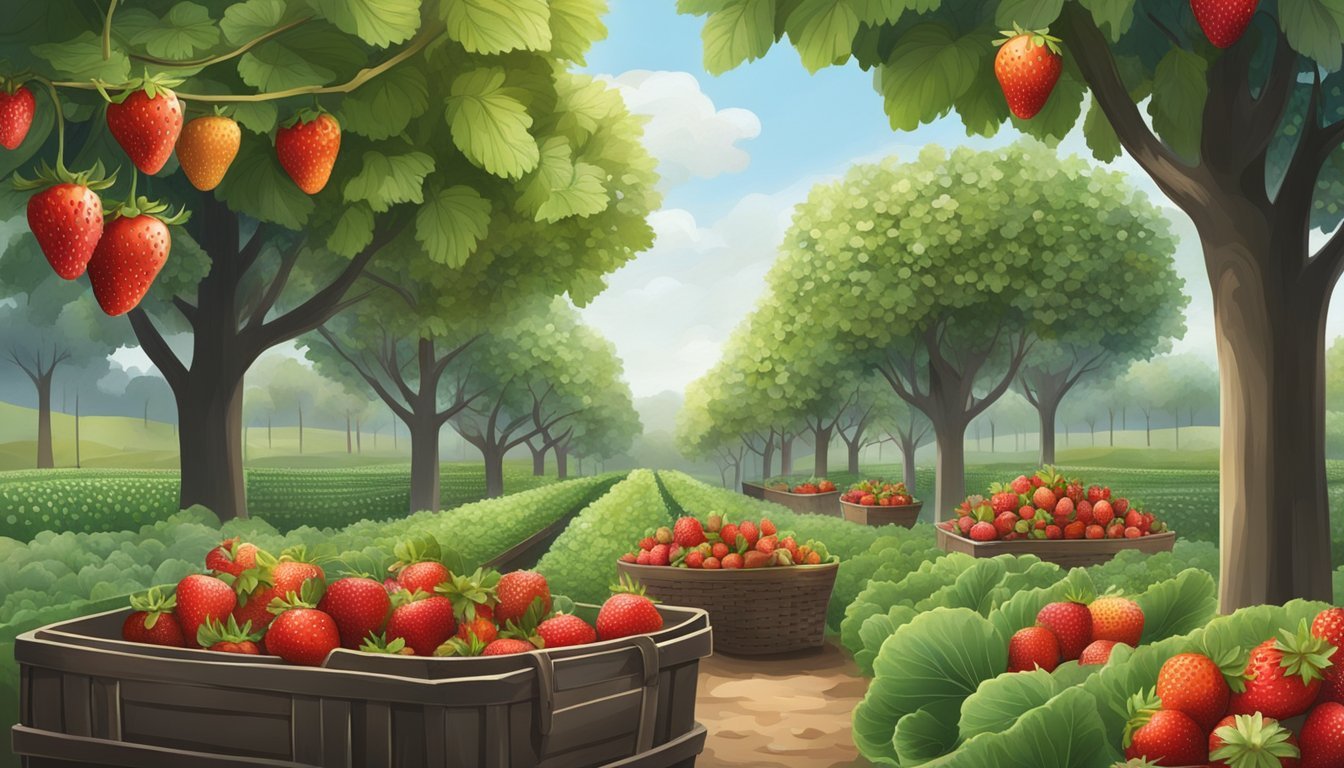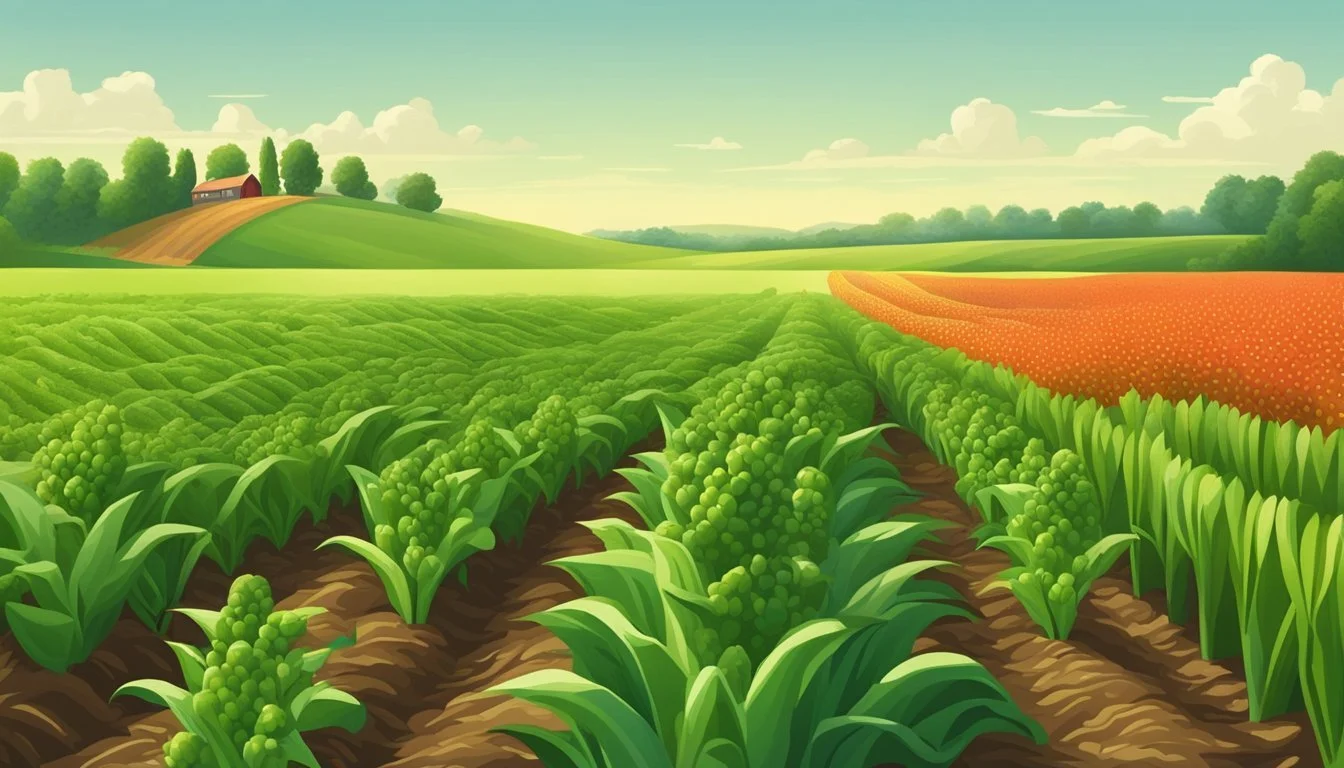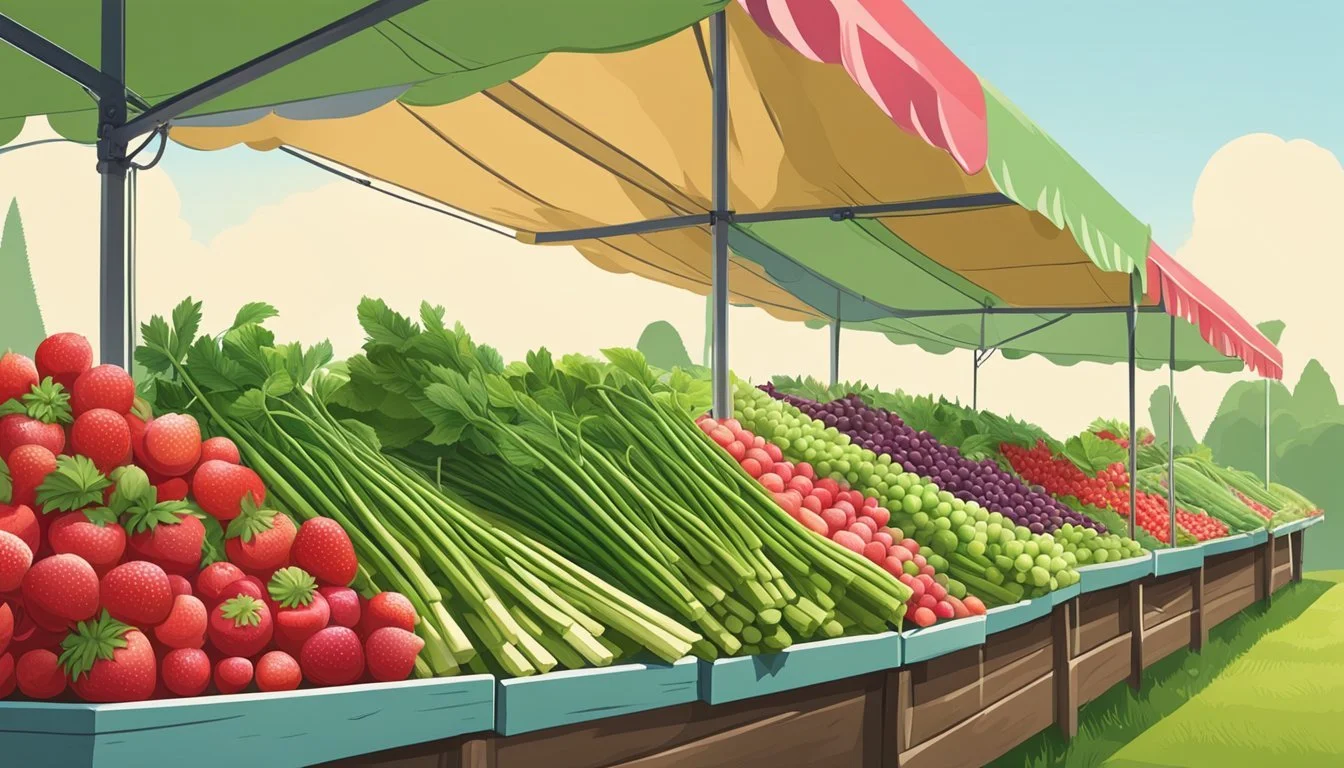Nebraska Seasonal Fruit & Vegetables in May
Your Fresh Picks Guide
This Article is Part of our Nebraska Seasonal Fruit & Veg Calendar
Nebraska's rich soil and temperate climate create a conducive environment for growing a variety of fruits (What wine goes well with fruit?) and vegetables. As the frost thaws and spring blossoms, May ushers in a season of renewal and growth. This is the time when farmers and gardeners in Nebraska start to see the fruits of their labor as the early season crops reach their harvest time.
During May, Nebraska's agriculture begins to offer a fresh bounty. Leafy greens like spinach (What wine goes well with spinach?) and lettuce thrive in the still mild temperatures, while radishes and spring onions add a crisp, peppery note to the palate. These vegetables, along with herbs such as cilantro and parsley, are commonly harvested during this month. As for fruits, Nebraska’s May is typically too early for the summer varieties; however, the last of the rhubarb, a tart favorite in pies and jams, is harvested.
Farmers' markets and local produce stands in Nebraska start to fill with these vibrant, seasonal offerings. These outlets not only provide residents with access to fresh, nutritious food but also support the local agricultural community. In May, the emphasis on farm-to-table eating begins to intensify, reflecting the state's agricultural heritage and commitment to sustainability.
Seasonal Overview
In May, Nebraska transitions into the heart of spring, with warmer temperatures encouraging a diverse array of fruits and vegetables to thrive. This period marks an upswing in local agricultural activity as growers leverage the region's hardiness zones, typically ranging from 4b to 5b, to plant and harvest seasonal produce.
Vegetables:
May's moderate climate allows for a variety of vegetables to be brought to the forefront of the local market. The rich soils of Nebraska support the growth of:
Asparagus
Radishes
Spinach
Lettuce
Spring peas
These vegetables are praised for their freshness and flavor during this time of the year.
Fruits:
While the fruit selection in May is more limited compared to the bounty of summer and fall, some varieties can be found during this spring month:
Strawberries (toward the end of May)
The presence of these fruits is a promising indicator that the growing season is moving towards the abundant offerings of summer.
Local Markets:
One can expect local farmers' markets to start showcasing these seasonal ingredients. A calendar of availability is instrumental for shoppers aiming to purchase the freshest produce, maximizing taste, and nutritional value.
The synthesis of spring conditions and Nebraska's agricultural practices presents a unique opportunity for consumers to engage with locally sourced, fresh produce indicative of the month of May.
Fruits Available in May
In Nebraska, May is a transitional month in which the remnants of spring fruit overlap with the early arrivals of summer varieties. Shoppers can expect to find a limited selection of fruits, with the prime focus on the last of the spring offerings and the very beginning of stone fruit and berry seasons.
Stone Fruits
Stone fruits are just beginning to enter the market in May, though their availability is usually sparse. Shoppers might not find a wide variety, but some early varieties of cherries might be available.
Berries
Strawberries come into season in May and are typically fresh and abundant. They represent the first wave of the berry season in Nebraska and can be found at local farmers' markets and other produce outlets.
Early Summer Fruits
While not traditionally categorized as a summer fruit, rhubarb is often available and commonly used in pies and jams, pairing well with the incoming wave of strawberries. Apples from the previous fall may still be found in storage with good quality, particularly varieties that store well, but they are not freshly harvested at this time.
Vegetables to Harvest in May
May in Nebraska brings a variety of vegetables to the peak of their harvest. Gardeners and farmers can expect an abundance of leafy greens, diverse root vegetables, and several types of cruciferous vegetables ready for the picking.
Leafy Greens
In May, kale, lettuce, and spinach are in their prime harvesting window. These leafy greens thrive in the mild temperatures of Nebraska's spring.
Kale: A hardy vegetable that can be harvested throughout much of the year, but the leaves are particularly tender in May.
Lettuce: An array of lettuce varieties, from romaine to leaf lettuce, are ready for harvest. They favor the cooler, more temperate days of early spring.
Spinach: This fast-growing leafy green should be harvested before the heat of summer to ensure the best flavor and quality.
Root Vegetables
Root vegetables like radishes are also perfect for picking in May. Radishes grow quickly, which makes them ideal for spring harvesting.
Radishes: Known for their crisp texture and peppery flavor, they should be harvested while small to medium in size for optimal taste.
Cruciferous Vegetables
The cooler days of May are also suitable for harvesting various cruciferous vegetables, such as cabbage, broccoli (how long does broccoli last?), and cauliflower.
Cabbage: This versatile vegetable can be picked when the heads are firm and the size desired. It's best when harvested before the summer heat sets in.
Broccoli: Look for firm, tight heads and harvest before the yellow flowers start to bloom.
Cauliflower: Similar to broccoli, heads should be compact, white, and firm. Once they begin to spread out, they should be harvested immediately to prevent a decline in quality.
Planting and Sowing
May marks a crucial time for gardeners in Nebraska, presenting optimal conditions for planting a variety of fruits and vegetables. With risk of frost largely past, it's time to capitalize on the warm soil and longer daylight hours to ensure a bountiful harvest.
Fruit Plantation
Fruit cultivation in Nebraska during May is limited given the state's climate; however, one can initiate the plantation of certain hardy berry shrubs and fruit trees that thrive in the coming growing season.
Vegetable Seeds
Vegetables take center stage with a number of options for sowing in May. Gardeners can plant seeds directly into the garden, considering each plant's sunlight and soil requirements. Natural fertilizers can boost growth and increase yield.
Direct sowing for robust growth (considering adequate sunlight and use of natural fertilizers):
Beans: Plant seeds 1 inch deep, space them 2 inches apart in rows.
Corn: Sow seeds 1 inch deep, in rows about 30-36 inches apart.
Cucumbers: Plant seeds 0.5 inch deep, space them 36 inches apart in rows.
Squash: For both summer and winter varieties, plant seeds 1 inch deep, in mounds spaced 3-4 feet apart.
Peppers and Tomatoes: These should start indoors and be transplanted after the last frost, requiring full sun and well-drained soil for best results.
For all vegetable seeds, keeping the soil consistently moist during the germination period is crucial for successful plant establishment.
Gardening Tips for Nebraskan Climate
The climate in Nebraska can be challenging for gardeners, with varying temperatures and seasonal concerns. Timely frost and temperature management, along with effective pest and disease control, are critical for a successful harvest.
Frost and Temperature Management
In Nebraska, the risk of frost is a prevalent concern, especially during the transitional months of May. Gardeners should monitor local weather forecasts closely and be prepared to protect plants when frost is predicted.
Protective Measures: Utilize covers like floating row fabrics or cloches for individual plants to insulate them against cold temperatures.
Soil Temperature: Ensure soil temperatures have reached at least 50 degrees Fahrenheit for warm-season crops before planting.
Pest and Disease Control
Pests such as ants, stink bugs, and aphids can pose significant threats to Nebraskan gardens. Regular monitoring and timely intervention are essential to maintain plant health and productivity.
Ant Control: Use bait stations or diatomaceous earth around the garden perimeter to prevent ants from establishing colonies near plants.
Stink Bug and Aphid Mitigation:
Physical Removal: Check for stink bugs and aphids regularly and physically remove them when observed.
Natural Predators: Encourage beneficial insects, like ladybirds, that feed on aphids by planting companion plants or creating a habitat for them.
For both pests and diseases:
Prevention: Keep garden clean and dispose of debris to reduce the chances of diseases and pests.
Crop Rotation: Rotate crops yearly to minimize recurring diseases specific to certain plants.
Harvest and Storage Recommendations
Harvesting in May requires careful selection to ensure flavor and quality, while storage practices are crucial for extending the lifespan of produce.
Fruit Handling
When harvesting fruits, one should select the ripest fruits with no visible signs of decay. For fruits such as strawberries or rhubarb, which are available in Nebraska during May, gentle handling is pivotal to prevent bruising. Fruits should be harvested in the cool morning hours and promptly stored in the refrigerator to preserve flavor and freshness.
Strawberries: Pick only the reddest berries, as they do not continue to ripen after picking.
Rhubarb: Harvest stalks that are at least 10 inches long and are firm, supporting the plant’s continued productivity.
Vegetable Preservation
Vegetables harvested in May, like asparagus or radishes, have the best flavor when stored properly. Selecting vegetables at their peak maturity ensures both flavor and a longer storage life. Vegetables should be cooled as soon as possible after harvest to maintain quality.
Asparagus: Store in the refrigerator with ends wrapped in a damp paper towel for freshness.
Radishes: Remove the tops before storing to retain moisture and crispness.
For both fruits and vegetables, understanding the variety and its specific storage requirements can greatly impact longevity and taste.
Agricultural Practices in Nebraska
Nebraska's agricultural sector is robust, featuring diverse farming practices catering to both conventional and organic markets. The state's commitment to agricultural excellence is evident in the local farms' production and the emphasis on sustainable farming.
Farmers and Local Farms
Local farmers in Nebraska are the backbone of the agricultural industry, playing a pivotal role in the state's economy. They operate various types of farms, ranging from large-scale operations to smaller, family-owned plots. A vast array of produce is cultivated, with an emphasis on seasonality and market demand. Consumers can access fresh produce through farmers' markets and local stores, which helps to reduce food miles and supports the local economy.
Sustainable Farming
Sustainable farming practices are increasingly adopted across Nebraska farms, with a focus on long-term environmental stewardship and soil health. Many farms integrate practices such as:
Crop rotation: To maintain soil fertility and reduce disease incidence.
Cover cropping: To prevent erosion, improve soil structure, and enhance nutrient cycling.
Conservation tillage: To reduce soil disturbance, thereby preserving soil organic matter and biodiversity.
Integrated pest management (IPM): To control pest populations while minimizing chemical inputs.
These farming techniques contribute to more sustainable agricultural outputs while also supporting the trend towards organic produce. They represent Nebraska's dedication to ensuring a productive yet environmentally-friendly future for its agriculture.
Seasonal Recipes and Preparation
In May, Nebraska's produce offerings inspire a wealth of fresh, flavorful recipes. Utilizing ripe fruits and robust vegetables, one can create dishes that are both highly nutritious and integral to local cuisine.
Fruit Dishes
In May, Nebraska's fruit dishes center around early harvests of strawberries, which boast high nutritional value and a naturally sweet flavor. A popular recipe to consider is the Strawberry Spinach Salad. It combines fresh spinach and ripe strawberries with a homemade poppy seed dressing that accentuates the berries’ sweetness.
Recipe: Strawberry Spinach Salad
Ingredients: Fresh strawberries, spinach, poppy seed dressing
Preparation: Toss the ingredients and drizzle with dressing.
Another fruit-centered recipe is Strawberry Rhubarb Pie, where the tartness of rhubarb complements the strawberries, resulting in a dessert classic beloved for its balance of sweetness and tang.
Recipe: Strawberry Rhubarb Pie
Ingredients: Strawberries, rhubarb, pie crust, sugar
Preparation: Fill the crust with a mixture of fruits and sugar, then bake until golden.
Vegetable Cuisine
Nebraska vegetables in May, such as peas, lettuce, and spinach, are featured in recipes like Spring Pea Risotto. This dish showcases the peas' subtle sweetness and creamy texture, pairing well with the al dente rice and rich Parmesan cheese.
Recipe: Spring Pea Risotto
Ingredients: Arborio rice, fresh peas, chicken broth, Parmesan cheese
Preparation: Cook the rice in broth until creamy, then fold in peas and cheese.
Utilizing lettuce and spinach, Garden Fresh Salads become a staple. Tossed with a vinaigrette dressing, these salads are a celebration of spring, delivering crisp textures and a plethora of vitamins.
Recipe: Garden Fresh Salad
Ingredients: Lettuce, spinach, various salad toppings (e.g., tomatoes, cucumbers, radishes)
Preparation: Combine all ingredients and dress lightly with vinaigrette.




